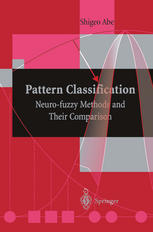

Most ebook files are in PDF format, so you can easily read them using various software such as Foxit Reader or directly on the Google Chrome browser.
Some ebook files are released by publishers in other formats such as .awz, .mobi, .epub, .fb2, etc. You may need to install specific software to read these formats on mobile/PC, such as Calibre.
Please read the tutorial at this link: https://ebookbell.com/faq
We offer FREE conversion to the popular formats you request; however, this may take some time. Therefore, right after payment, please email us, and we will try to provide the service as quickly as possible.
For some exceptional file formats or broken links (if any), please refrain from opening any disputes. Instead, email us first, and we will try to assist within a maximum of 6 hours.
EbookBell Team

4.0
66 reviewsNeural networks have a learning capability but analysis of a trained network is difficult. On the other hand, extraction of fuzzy rules is difficult but once they have been extracted, it is relatively easy to analyze the fuzzy system. This book solves the above problems by developing new learning paradigms and architectures for neural networks and fuzzy systems.
The book consists of two parts: Pattern Classification and Function Approximation. In the first part, based on the synthesis principle of the neural-network classifier: A new learning paradigm is discussed and classification performance and training time of the new paradigm for several real-world data sets are compared with those of the widely-used back-propagation algorithm; Fuzzy classifiers of different architectures based on fuzzy rules can be defined with hyperbox, polyhedral, or ellipsoidal regions. The book discusses the unified approach for training these fuzzy classifiers; The performance of the newly-developed fuzzy classifiers and the conventional classifiers such as nearest-neighbor classifiers and support vector machines are evaluated using several real-world data sets and their advantages and disadvantages are clarified.
In the second part: Function approximation is discussed extending the discussions in the first part; Performance of the function approximators is compared.
This book is aimed primarily at researchers and practitioners in the field of artificial intelligence and neural networks.